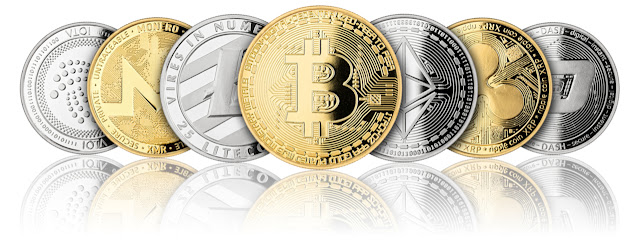Mark Tencaten | Cryptocurrency Trading
The act of investing in cryptocurrency price
action through a CFD trading account, or buying and selling the currency coins
through an exchange platform, is referred to as cryptocurrency trading. Contract
for Difference (CFD) trading is a type of derivative that allows you to trade
on crypto price changes without possessing the underlying currencies. You can
go long or buy if you believe the value of a cryptocurrency will rise, or short
or sell if you believe the value will fall.
Both are leveraged contracts, which means you
only need a small deposit (known as margin) to get complete exposure to the
crypto market. Since the profit or loss is still determined based on the total
size of your position, leverage magnifies both gains and losses.
How does
the Crypto Market work?
The cryptocurrency market is decentralized,
meaning they are neither issued nor supported by a central authority like a
government. Instead, they're distributed across a computer network. On the
other hand, Cryptocurrencies can be purchased and sold on exchanges and held in
'wallets.'
Contrary to traditional currencies,
cryptocurrencies only exist as a shared digitized record of possession recorded
on a blockchain. A user sends crypto units to another investor's electronic
wallet. The transaction isn't considered complete until it's validated and
added to the blockchain, which is done by a process known as mining.
A blockchain is a decentralized digital ledger of
data. This is the transaction history for each cryptocurrency unit, showing how
the ownership of the crypto coins has changed over time. Blockchain records
transactions in the form of blocks, with new blocks added to the chain's front
end.
What drives
the price of cryptocurrencies?
Cryptocurrencies markets are driven by demand and
supply. Due to their decentralized nature, they are immune to most economic and
political issues that influence traditional currencies. There is still a great
deal of uncertainty regarding cryptocurrencies. Mark Tencaten, the owner
of NGS Group Limited, has pointed out the following which can have a
significant impact on its prices:
1.
The total number of crypto coins in circulation, as well as the pace
at which they are released, destroyed, or lost.
2.
Market capitalization which refers to the total worth of all
coins in circulation, as well as how investors perceive this value to be
changing.
3.
The way cryptocurrency is represented in the media and the amount of
coverage it receives.
4.
The simplicity with which a cryptocurrency can be integrated into an
existing network, such as payment systems for e-commerce.
5.
Major incidences such as regulation revisions, security breaches, and
economic disasters.
What is
cryptocurrency trading?
Mark Tencaten explains how to use a CFD account to
trade cryptocurrency. These are the derivatives that allow you to trade on
whether the value of your selected cryptocurrency will rise or fall. Prices are
indicated in traditional currencies, such as the US dollar, and you never
possess cryptocurrency ownership.
CFDs are leveraged commodities, meaning you can
take a position for a proportion of the trade's absolute value. Leveraged
commodities can increase your profits, but they can also increase your losses
if the market goes against you.
Some key terms of cryptocurrency trading as
mentioned by Mark Tencaten:
1.
Lot: Lots are batches
of cryptocurrency coins designed to standardize the size of transactions. Since
cryptocurrencies are so volatile, lots are often relatively small: a majority
are only a single unit of the underlying cryptocurrency. On the other hand,
some cryptocurrencies are traded in bigger lot sizes.
2.
Leverage: Leverage is a
medium of acquiring access to large sums of cryptocurrencies without needing to
pay the entire worth of your trade upfront. Instead, you make a small deposit
called a margin. When a leveraged position is terminated, the full size of the
trade determines the profit or loss.
3.
Margin: Margin is a
significant component in leveraged trading. It's the term used for the first
deposit you make to begin and keep a leveraged position open. Mark Tencaten
mentions that when you are trading in cryptocurrencies on margin, remember that
the margin requirements will vary depending on your broker and your trade size.
Mainly, the margin is represented as a percentage of the total position.
4. Pips: Pips are the units used to evaluate the cryptocurrency price movement, and they correspond to a one-digit price change at a given level. In general, expensive cryptocurrencies are traded at the dollar level; thus, a price change from $157.00 to $158.00 is considered a single pip move. However, several lower-value cryptocurrencies are traded on numerous scales, with pip values ranging from a cent to a fraction of a cent.


Comments
Post a Comment